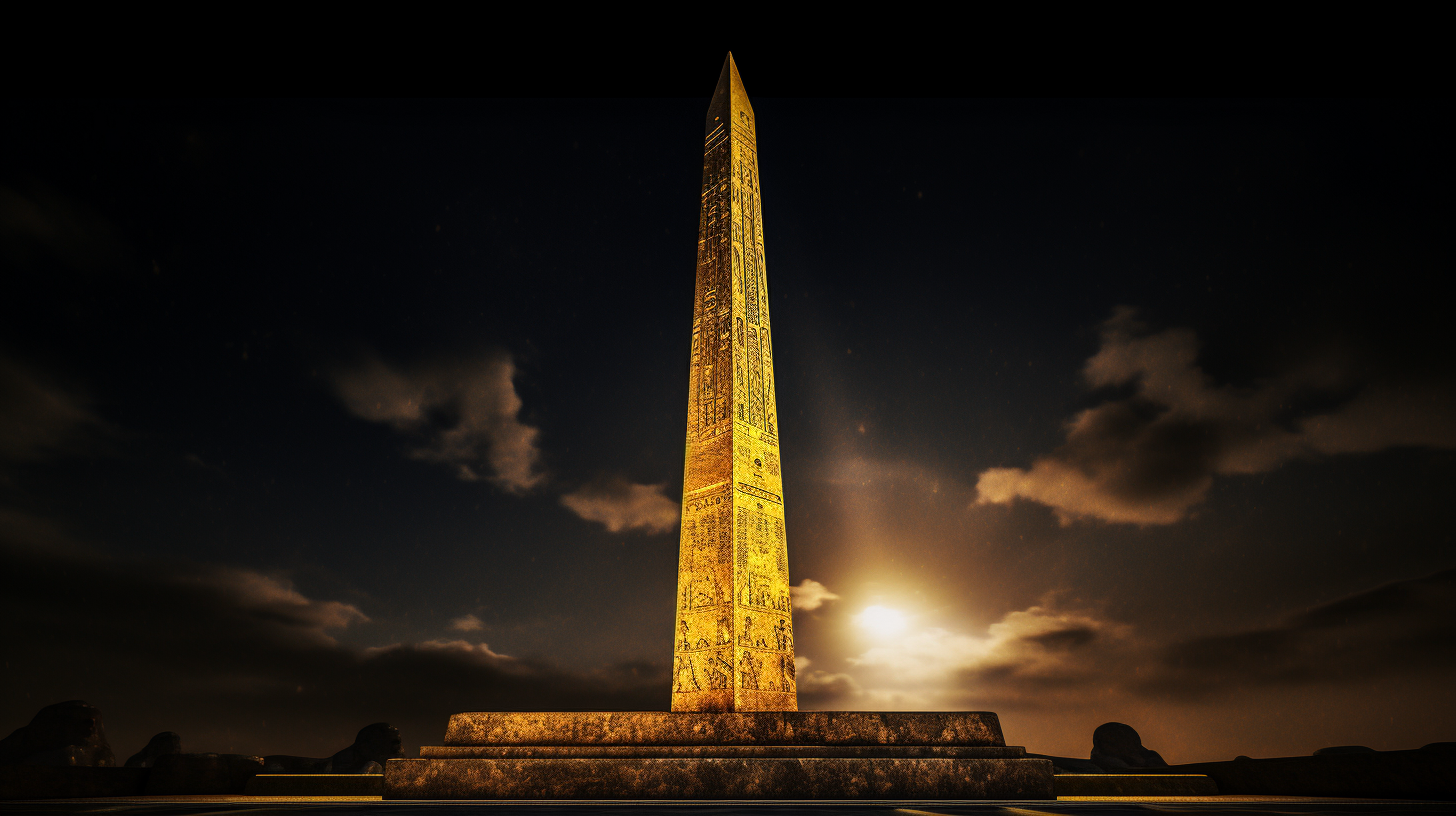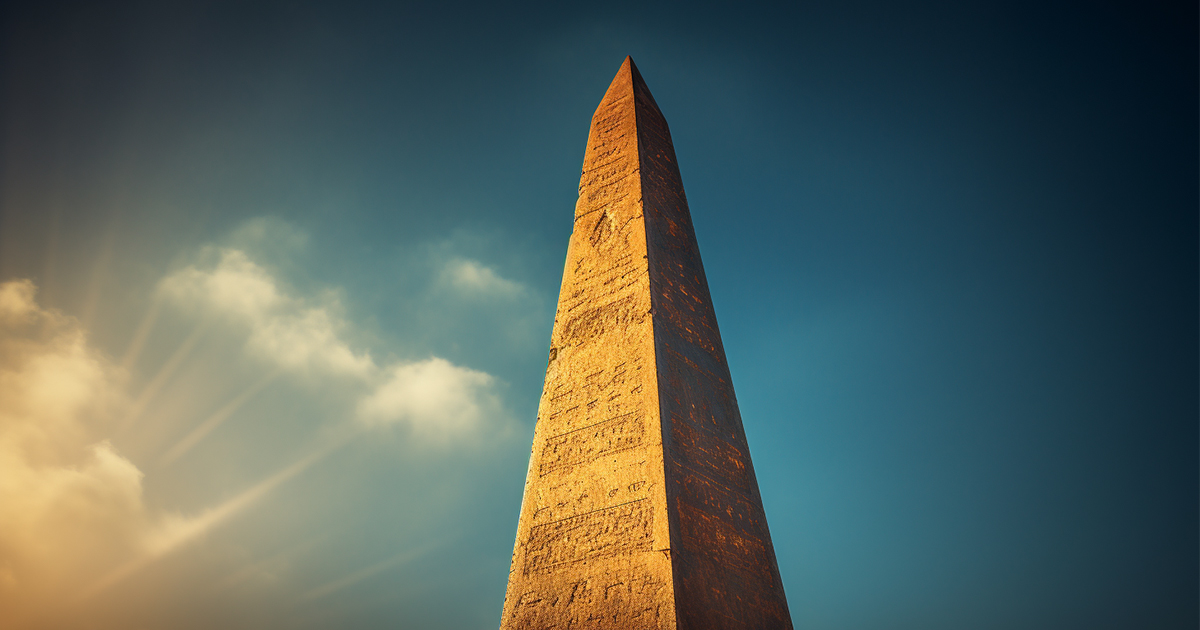In the realm of past societies, one often contemplates remarkable architectural achievements such as the Egyptian pyramids or the extensive Great Wall of China. However, amidst these renowned wonders lies a hidden and enthralling structure known as obelisks.
These remarkable four-sided monuments have captured the fascination of historians and, more recently, theorists who propose an intriguing correlation with advanced technology. Let us delve into the domain of ancient obelisks and uncover the captivating enigmas they enfold.
The Enduring Influence of Obelisks Throughout Different Time Periods
Rising tall as vigilant sentinels in the Egyptian terrain, obelisks have intrigued generations. The world’s most ancient surviving obelisk traces back to around 1900 B.C., proudly standing just 20 miles northeast of the renowned Giza Pyramid Complex.
The root of the term “obelisk” can be linked back to the Greek term “obeliskos,” signifying a “pointed pillar.” These towering structures are recognized by their slender, tapering structure culminating in a pyramidion at the summit.

In ancient Egypt, hieroglyphs adorned the four sides of these massive stones, often preserving historical narratives of battles, crucial events, or the myths prevalent in the region. While obelisks emerged centuries after the standing stones of Carnac, Brittany, they shared a pivotal similarity: both were monoliths carved from a single block of red granite.
The Allure of Quartz Crystal Energies
What sets Egyptian obelisks apart is the integration of red granite embedded with minute quartz crystals. This distinctive composition is believed to impart a unique energy to the obelisks.
Ancient societies acknowledged this energetic phenomenon, perceiving obelisks as living entities akin to the even more ancient standing stones. This interconnectedness between ancient dwellers and these towering structures raises thought-provoking queries about their essence.
Ancient Ties to the Divine Realm
Proponents of ancient astronaut theory posit that the Egyptians comprehended the potential of obelisks in establishing a profound connection with the divine. The upward-reaching form of the obelisk, resembling a cathedral, symbolized a celestial bond. Crowning an obelisk was a notable stone – the capstone, constructed as a pyramid and fashioned from finely polished granite embellished with hieroglyphs.
Remarkably, this gleaming capstone, coated in pure gold, created a mesmerizing spectacle when illuminated by sunlight, visible from afar. This capstone served as the conduit through which mortals communicated with deities.
Egypt’s Reflection of Celestial Harmony
Historical narratives allude to Egypt’s resonance with “heavenly energies,” reflecting the grandeur of the celestial domain on Earth. This concept, often encapsulated as “as above, so below,” hints at a connection between the skies and the earthly expanse. While conventional scholars interpret this metaphorically, advocates of ancient astronaut theory propose an alternate perspective.
Theory of an Energy Grid and Obelisks
In the viewpoint of these theorists, obelisks served not merely as symbols but as essential elements of an expansive wireless energy grid that also encompassed the pyramids. Drawing parallels with contemporary technology, they draw a comparison to wireless device charging for this energy transfer. In this envisioned scenario, extraterrestrial entities could have recharged their craft utilizing these obelisks and standing stones.
Moreover, it is probable that the pyramids fulfilled a similar purpose, hinting at the existence of highly advanced technologies beyond our current comprehension.
The Dynamic Potential of Quartz Crystal Dynamics
The notable concentration of quartz crystal within the walls of the Great Pyramid further bolsters this notion. Alongside other ancient structures like obelisks and pyramids, it is speculated that a global network for wireless energy transmission might have been set up.
Strategically situating these obelisks and standing stones across the globe, in conjunction with the pyramids, could have facilitated the transmission and reception of energies.
An International Framework for Energy Dissemination
These ancient standing stones could have operated as antennas and energy hubs, potentially enabling a global power distribution system. Vessels, submarines, and various electrical devices might have drawn power directly from the atmosphere, harnessed and distributed by the pyramids and obelisks.
Discover this Video for Deeper Insights
A Recapitulation
In conclusion, the perplexing obelisks of ancient Egypt offer a captivating peek into a realm where advanced technology intersects with divine connections. While traditional interpretations view them symbolically within religious and cultural contexts, the conjectures of ancient astronaut enthusiasts encourage us to envision a world where these monumental structures played a pivotal role in upholding a civilization veiled in mystery.
Whether perceived as symbolic emblems or technologically innovative entities, the enduring allure of these monumental obelisks and the mysteries they safeguard remains unequivocal.
